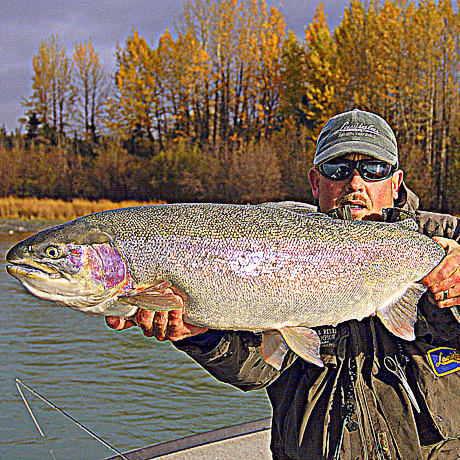Alaska is a fly-fishing enthusiast’s dream, especially for those who want to catch the elusive and magnificent rainbow trout. Rainbow trout in Alaska are among the largest and most abundant in the world, thanks to the rich and diversified ecology that supports them. Alaska has something for every angler, whether they prefer a distant wilderness excursion or a relaxing lodge stay. While fishing for Alaska rainbow trout fly fishing, visitors may take in Alaska’s stunning scenery, wildlife, and culture. Rainbow trout fishing chances abound in Alaska’s rivers, streams, and lakes.

What Makes Alaska Rainbow Trout Unique?
Rainbow trout are found in various rivers, lakes, and streams throughout the state. They are flexible, thriving in a variety of habitats and water temperatures. They are also ferocious predators that feed on insects, crustaceans, salmon eggs, and salmon smolt. It makes them exciting and challenging to catch with a fly rod.
How Does Alaska Rainbow Trout Grow to Be So Big?
Rainbow trout in Alaska are vast and plentiful because of:
● Salmon runs in Alaskan rivers provide food and nutrition to trout.
● Summer’s long days allow trout to forage more aggressively and efficiently.
● The cool, pure water keeps the trout healthy and powerful.

Where to Go Fishing for Rainbow Trout in Alaska
The fishing spots in Alaska rainbow trout fly fishing are diverse and attractive, providing various opportunities for rainbow trout. One can go fishing in:
● Southcentral Alaska has well-known and prolific rivers such as the Kenai, Russian, and Copper Rivers.
● Southwest Alaska, where one can access distant and unspoiled rivers such as the Kvichak, Alagnak, and Naknek.
● Southeast Alaska, where one can explore gorgeous and unique rivers such as the Situk, Taku, and Stikine.

When to Go Fishing in Alaska
The optimum time to fish for rainbow trout in Alaska depends on one’s goals and preferences. Here are a few ideas:
Spring: When the fish are hungry and active after the winter, catch them on dry flies or streamers.
Summer: Catch them on beads or egg patterns as they follow and consume the eggs of spawning salmon.
Fall: Catch them on flesh flies or streamers when they dine on rotting salmon carcasses in the fall.
Winter: During the winter, they are less active but still feed on insects and crustaceans, so catch them on nymphs or streamers.

How to Plan a Fishing Trip in Alaska
Follow these steps to organize an Alaska fishing trip:
● Make a budget for travel, lodging, equipment, and other costs.
● Choose a location corresponding to the fishing objectives, preferences, and seasons.
● Plan excursions to, from, and within Alaska based on the budget and destination.
How to Have Fun Fishing
Follow these strategies to enjoy and excel at rainbow trout fly fishing:
● Hiring a guide will provide expert guidance, equipment, and safety.
● Be adaptable to the weather, water, and fish.
● Be kind and considerate to the fish, the environment, and other anglers.
Conclusion
Alaska rainbow trout fly fishing is a fantastic activity that will give you memories and stories to last a lifetime. Rainbow trout in Alaska are among the largest and most abundant in the world due to the rich and diversified ecology that supports them. Rainbow trout fishing is available in a variety of locales throughout Alaska. It has different fishing seasons, with different conditions and strategies for catching rainbow trout.

